The exhibition “Four Ideas” curated by Lorenzo Bruni at the Enrico Astuni gallery gathers the works of Øystein Aasan (1977, Kristiansand, Norway; lives and works in Berlin), Peter Halley (1953, New York; lives and works in New York ), Jonathan Monk (1969, Leicester, UK; lives and works in Berlin) and Maurizio Nannucci (1939, Florence, where he lives and works), authors who share an interest in color interpreted as a perceptual vibration and expansion and in an idea of landscape intended as a physical space to be experienced.
Øystein Aasan‘s practice explores the legacy of Modernism in the contemporary world and the connections between architecture, ideology and news to address the theme of memory and the historicization of the various ways of understanding the image by the viewer. His works, created using books, collages, sculpture and painting, function as display devices that exclude any narrative or sequential reading and arise from the combination of details taken from different cultural contexts that evoke apparently heterogeneous or contradictory messages. Emblematic of his approach is the large installation present in the exhibition composed of works from the Lost (2019) and Once removed (2020) series placed on shelves applied to a purple wall. The shades, materials and design of the display-device recall the purism of Le Corbusier and Pierre Jeanneret (whose design philosophy in Bologna can be fully appreciated in the reconstruction of the Esprit Nouveau pavilion built in 1977 as a faithful copy of the eponymous temporary exhibition building designed by the two architects for the 1925 Exposition International des Arts Décoratifs et Industriels Modernes in Paris). The impression of order and systematization that one receives at first sight is immediately contradicted by the mobile and centrifugal arrangement of the works, each of which, requiring a specific distance and a different point of view to be investigated, instigates the observer to approach, lower himself or to take objects in hand to examine them better. Taken as a whole, the installation could be defined as a wall of notes in which echoes the memory of the blackboards of art historians of the last century, the most famous of which is Aby Warburg’s Atlas Mnemosyne, carried out in the 1920s and left unfinished, through which the German scholar compared images from different eras and contexts in order to identify recurring forms and themes over time. By Warburg Øystein Aasan acknowledges the process based on an idea of a changing archive subject to the passage of time, but his investigation focuses on images of works of art lost or irremediably damaged during the bombings of the Second World War, with the intent to create a sort of simultaneous museum that transmits the testimony of a repressed past and a future that never existed. The evocative details of works photographed in black and white that populate the exhibition display, protected and enlivened by the artist with screens of transparent wax, a material traditionally connected to restoration practices, want to trigger an active process of perception of memory and re-appropriation of the identity suggesting an intertwining of narratives and new relational possibilities.
Peter Halley, whose writings in the 1980s became the basis for Neo-Geometric Conceptualism (also known as Neo-Geo), the branch of Neo-Conceptualism associated with the work of Ashley Bickerton, Halley and Jeff Koons, is famous for having hybridized the language of geometric abstraction with suggestions from the energetic New York urban space that explode in the iconic use of fluorescent paints. Since the mid-1990s, the artist has created site-specific environmental installations that bring together a wide range of images and mediums, including paintings, wall flow charts and digitally generated wallpaper prints. The three-dimensional, tactile and architectural quality of his works (in which the surfaces are not flat, but worked with clear references to the modules and decorations of the urban environment) and the titles that often refer to the idea of cell, duct and grid make us understand how his highly recognizable stylistic code is not only the bearer of formal and theoretical values as in classical abstractionism, but originates in a critical reflection on the inner structures of the postmodern landscape and on their cultural significance. Peter Halley’s research fits fully into postmodernism due to the emphasis on the concept of simulation that almost leads to a parody of the communicative power of language which, just when it lies and pretends, is able to reveal a more stringent truth than any explanation. If at the beginning of the 90s Halley’s cells and skyscrapers cast colored shadows on the process of depersonalization that at the dawn of the global era normalized the sacrifice of subjectivity in favor of the result intended as an absolute value, the fact that thirty years after the same expressive code appears extraordinarily current despite the change of the frame of reference, demonstrates how more or less consciously the artist had already at that time intuited the direction of the change to come. The attitude to visualize the world through lines, connections and codes and the formal and chromatic impeccability of his paintings (increasingly oriented towards the sculptural dimension) can be read today as a premonition of the digital dematerialization and dystopias of the society of remote control. The cells and tunnels encoded by Halley find in fact an equally stringent correspondence with the invisible transmission and storage structures on which the hyper-communication society is based, revealing how its attention to reality is not only formal, but is the direct consequence of his lucid theoretical precision with regard to the changing world.
Jonathan Monk reflects on the legacy of the 1960s with the aim of investigating what differentiates an object that can be contextualized in the sphere of everyday life from a work of art and vice versa. The artist reproduces, recast and re-examines the fundamental works of Conceptual and Minimal art with an ingenious and irreverent approach which, by demystifying the creative process, reflects on the tendency of contemporary art to devour its own references, at the same time paying homage to figures such as Sol LeWitt, Ed Ruscha, Bruce Nauman and Lawrence Weiner. The extreme simplicity of his language is therefore born as a refined search for synthesis, while the powerful and immediate aesthetics of his works hides a wide complexity of references that manages to find an autonomous space among the greats of the 20th. It could be said that the artist proposes to the observer an experience of “déjà-vù with slips” which, contrary to the practice of quotation which is based on taking details or style, is aimed at reactivating the processes of other artists to verify which of the insights produced by the great collective ideas from the past can still affect contemporary visual culture. Particularly interested in the conceptual practices of the 1960s, he understands their intellectual rigor but not the ideological components, promptly neutralized by the lightness of his playful sense and the propensity to warm up conceptual abstraction with references to his personal experience. These characteristics can be read very clearly in the installation Untitled (Oranges for JB) I-XII, created specifically for the exhibition and composed of twelve digital prints on which the same orange appears on a white background reworked in different colors, none of which corresponds to the color of the real fruit, under which the deceptively tautological wording “ORANGE” always appears. In this case the artist collides an ostentatious aesthetic pleasantness, which update the Pop aesthetic in the light of the new digital stereotypes, the speculations on the connotative power of language by Joseph Kosuth, enriched by ‘ambiguity of the term that refers with different implications both to the fruit and to its natural color, and an ordered arrangement of similar elements that recalls the minimalist repetition without falling into sterile automatisms thanks to the sensual and pictorial use of the chromatic relationships between the modules .
Maurizio Nannucci, who has always been interested in the work-architecture-urban landscape relationship, understands art as a mental process that can also be applied to mass production in which the artistic object loses its uniqueness, but gains presence and new freedom. Author of an eclectic and varied production, he is known above all for his work on language and for the use of neon, a medium used by commercial activities to signal their presence in urban space and which he has used since the 1960s to reflect on the role of art in relation to public space. Conceptual artist, who made his debut in the context of concrete poetry and electronic music, always puts an idea of never detached or coldly rationalizing processuality at the center of his work, which he manages to coexist without inconsistencies with a physical approach capable of returning emotions in the abandonment to the captivating charm of color. In his installations, light and words generate completely invented spaces that transform the structure in which each work is placed, giving rise to environments-experiences that activate in the observer a relationship of physical and not just conceptual positioning towards architecture and space. An example of these aspects is the neon Idea on display, in which the letters that make up the title, each made in a different color, overlap, producing an amalgam of signs and light emissions. Through a careful calibration of the rational and emotional components, the artist manages to bring together different modalities of the word, translating them into a pictorial experience in which the writing takes on the value of sign and body before identifying itself with its meaning (that is identical in Italian and English).
Info:
QUATTRO IDEE. Øystein Aasan, Peter Halley, Jonathan Monk, Maurizio Nannucci
06.03.2021 – 05.06.2021
curated by Lorenzo Bruni
Galleria Enrico Astuni Bologna
Via Iacopo Barozzi, 3 Bologna
www.galleriaastuni.net
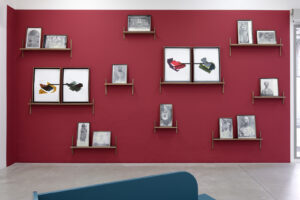 Øystein Aasan, installation made of artworks from Lost, 2019 and Once removed series, 2020. Courtesy Galleria Enrico Astuni
Øystein Aasan, installation made of artworks from Lost, 2019 and Once removed series, 2020. Courtesy Galleria Enrico Astuni
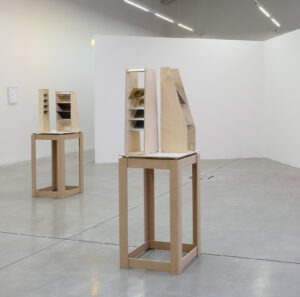 Øystein Aasan, Untitled (Proliferation series), 2008. Courtesy Galleria Enrico Astuni
Øystein Aasan, Untitled (Proliferation series), 2008. Courtesy Galleria Enrico Astuni
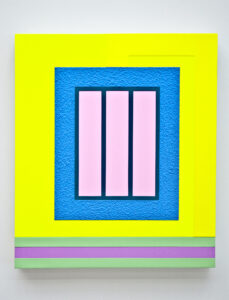 Peter Halley, Senza titolo, 2015, acrylic and roll-a-tex on canvas. Varese, private collection
Peter Halley, Senza titolo, 2015, acrylic and roll-a-tex on canvas. Varese, private collection
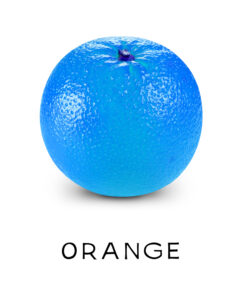 Jonathan Monk, Untitled (Orange for JB – Blue Orange), 2020. Courtesy Galleria Enrico Astuni
Jonathan Monk, Untitled (Orange for JB – Blue Orange), 2020. Courtesy Galleria Enrico Astuni
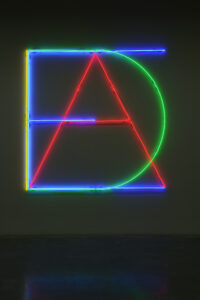 Maurizio Nanucci, Idea, 1992, Murano glass neon green, red, yellow and blue. Courtesy the artist and Galleria Enrico Astuni
Maurizio Nanucci, Idea, 1992, Murano glass neon green, red, yellow and blue. Courtesy the artist and Galleria Enrico Astuni
Cover image: Jonathan Monk, Listen For Yourself, 1999. Courtesy Galleria Enrico Astuni
Graduated in art history at DAMS in Bologna, city where she continued to live and work, she specialized in Siena with Enrico Crispolti. Curious and attentive to the becoming of the contemporary, she believes in the power of art to make life more interesting and she loves to explore its latest trends through dialogue with artists, curators and gallery owners. She considers writing a form of reasoning and analysis that reconstructs the connection between the artist’s creative path and the surrounding context.






NO COMMENT